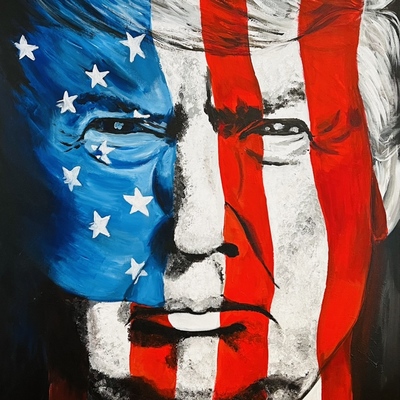
US Demands $380 Billion "Manufacturing Alliance Fund" from South Korea, Rattles Markets
US Demands $380 Billion "Manufacturing Alliance Fund" from South Korea, Rattles Markets
Seoul Faces August Deadline as White House Pivots from Trade Barriers to Cash Infusion
the United States has formally requested South Korea establish a massive investment fund potentially exceeding $380 billion – roughly 80% of Seoul's entire annual budget – to bolster American manufacturing in strategic sectors, according to South Korean officials who confirmed the proposal on July 15.
The unprecedented demand, delivered during high-level meetings in Washington on July 7 and 10, marks a significant shift in U.S. trade strategy from traditional market access requests to direct financial commitments from allies. Officials familiar with the negotiations described a tense atmosphere as South Korean representatives struggled to respond to what one called "financial diplomacy on an unprecedented scale."

"The Japan Benchmark" – A $400 Billion Shadow Looms Over Seoul
The American proposal explicitly mirrors a still-theoretical $400 billion sovereign fund floated during U.S.-Japan talks in May. U.S. negotiators pointed to South Korea's comparable trade surplus with America – approximately $56 billion in 2024 – to justify similar financial expectations, despite South Korea's significantly smaller economy.
"What we're witnessing is parity politics, not economics," noted one veteran trade analyst who requested anonymity. "Washington is applying a simple calculation: similar trade surplus, similar financial commitment – regardless of fiscal capacity."
For Seoul, the implications are staggering. Even a scaled-down version would represent the largest foreign investment commitment in Korean history, potentially redirecting capital that many argue is desperately needed domestically.
The August 1 Tariff Guillotine
Adding urgency to an already fraught negotiation, the Trump administration has established an August 1 deadline, after which it threatens to impose 25% "reciprocal tariffs" on South Korean imports if substantial progress isn't made.
Korean negotiators arrived in Washington prepared with traditional trade concessions – including agricultural market openings and digital services reforms – only to find American officials fixated on the fund proposal as the primary deliverable ahead of the U.S. election cycle.
"Both sides understand what's happening here," explained a financial strategist with direct knowledge of the talks. "The White House wants a headline number to brandish before the election, not necessarily a fully funded facility on day one."
Seoul's Impossible Math: Finding $380 Billion
The proposal has sparked urgent internal debates within South Korean government circles about fiscal feasibility. Korea's 2025 base budget stands at approximately $471 billion, with debt-to-GDP ratios already set to breach 58% following two supplementary spending packages approved in June and July.
Even a significantly downsized investment fund of $50 billion would add approximately two percentage points to South Korea's debt-to-GDP ratio unless structured as off-balance-sheet financing.
Korean officials are exploring multiple funding avenues, including:
- Tapping the Korea Investment Corporation's $231 billion sovereign wealth fund – a politically sensitive option
- Issuing dollar-denominated sovereign bonds, though credit default swap spreads have already widened 18 basis points since June on tariff concerns
- Utilizing policy banks and counting the commitments as "contingent liabilities" – currently considered the most probable approach
Political Crossfire: "Exporting Jobs" vs. "Strategic Necessity"
The fund proposal comes at a politically precarious moment for President Lee Jae-myung, who won election on an anti-conglomerate, pro-welfare platform. Opposition parties have already begun framing the potential fund as "exporting Korean jobs and capital" at a time of domestic economic challenges.
Supporters counter that the fund could actually benefit Korean firms by supporting their expansion into the U.S. market amid stagnant domestic demand and intensifying competition from China in global markets.
"This is about reshoring optics going into a U.S. election," explained an economic policy researcher at a major Korean think tank. "A Korean-financed semiconductor facility in Ohio means American jobs without American taxpayer money. But it also means locking Korean capital to U.S. soil, potentially reducing China-exposed investments at home."
Market Reverberations: The "Korean Compromise" Trade
Financial markets have already begun pricing in potential outcomes, with the Korean won weakening and government bond yields falling as investors weigh various scenarios.
Based on analyst consensus, three potential outcomes have emerged:
-
Base Case (55% probability): A scaled-down, staged facility of $40-80 billion disbursed over five years, tied to Korean foreign direct investment already planned for U.S. battery and chip manufacturing.
-
**Tail Risk **: Collapse of negotiations, triggering August 1 tariffs, with the Korean won potentially overshooting 1,500 to the dollar and government bond yields falling below 3%.
-
**Bull Case **: A symbolic fund of $20 billion or less, paired with a reciprocal tariff standstill and joint "friend-shoring" language ahead of the G-7 meeting.
Investment Outlook: Strategic Positioning Amid Uncertainty
For investors navigating this geopolitical crosscurrent, market strategists suggest several positioning strategies:
Korean shipbuilders appear particularly well-positioned under most scenarios, as the U.S. has explicitly mentioned shipbuilding as a priority sector for the fund. Companies like HD Hyundai Heavy Industries and Samsung Heavy Industries could benefit from subsidized capital expenditure for U.S.-flagged LNG carriers and container vessels.
Currency markets suggest caution, with the consensus view leaning bearish on the Korean won. "Even with a compromise deal, the fund would extract liquidity from the Korean market," noted one currency strategist. "Combined with likely Bank of Korea easing in Q4, we see USD/KRW moving toward 1,450."
Korean government bonds present an attractive opportunity, with yields likely to decrease as fiscal concerns and potential growth impacts from tariff threats drive a flight to safety.
What Comes Next: Critical Dates to Watch
Market participants are closely monitoring several upcoming catalysts:
- July 20: Informal U.S.-Korea working group call, with potential leaks regarding a "staged" funding structure
- July 25-26: Korean parliamentary questions on tariff talks may reveal the maximum size Seoul can accommodate
- July 31: Potential White House rally in Pennsylvania where any framework agreement might be highlighted
- August 1: The tariff trigger date – any postponement would significantly improve the odds of a compromise
For now, seasoned observers expect a significantly scaled-down version of Washington's initial ask – likely in the $50 billion range disbursed over multiple years – but even this represents a material reallocation of Korean public capital toward U.S. strategic industries.
Disclaimer: This analysis is based on current market conditions and should not be considered investment advice. Past performance does not guarantee future results. Investors should consult financial advisors for personalized guidance.